Let me structure this according to the user's format requirements.Creating a dedicated art room transforms your home into a creative sanctuary where artistic expression flourishes. Today's art rooms blend functionality with inspiration, requiring thoughtful planning of lighting, storage, and workspace design to maximize creative potential . From proper lighting that mimics natural daylight to innovative storage solutions that keep supplies organized yet accessible, every element contributes to a space that nurtures artistic growth. Whether you're converting a spare bedroom, carving out a corner, or reimagining an entire room, the key lies in creating an environment that supports your creative process while remaining practical for daily use . These twenty inspiring art room ideas will help you design a space that balances creativity with functionality, ensuring your artistic haven becomes the heart of your home's creative energy.
1. North-Facing Art Room Windows for Natural Light

North-facing windows provide the most consistent natural light for art rooms, delivering indirect illumination that remains steady throughout the day without dramatic shifts . This coveted lighting arrangement minimizes glare and harsh shadows, creating ideal conditions for accurate color perception and detailed work. Position your easel or work table at a 35-degree angle from the window to optimize the directional light falling on your canvas . The consistent quality of north light eliminates the need for constant adjustments as the sun moves, allowing you to maintain focus on your creative process. If your art room lacks north-facing windows, consider installing sheer curtains or diffusion materials to soften harsh southern or western light , creating a more controlled environment for artistic work.
2. LED Art Room Lighting with High CRI Values
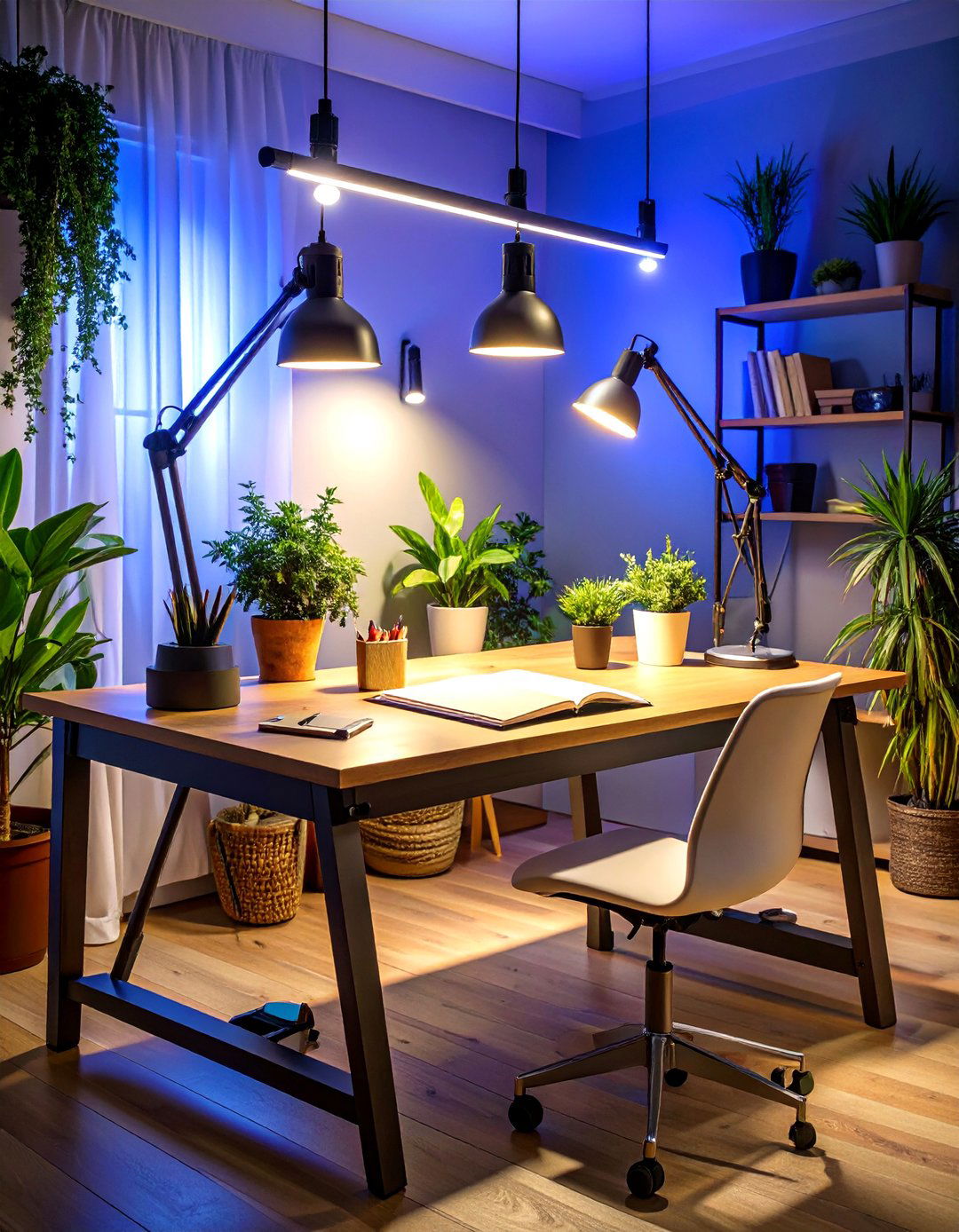
Modern LED lighting systems with Color Rendering Index (CRI) values of 90 or higher provide exceptional color accuracy for art room work, closely mimicking natural daylight . Select bulbs with color temperatures between 5000K and 5500K to achieve the optimal balance of warm and cool light that reveals true colors without distortion . Track lighting systems offer flexibility, allowing you to direct light exactly where needed while avoiding unwanted shadows on your work surface. Consider adjustable LED strips or specialized art studio lights that can be positioned to illuminate both your workspace and your canvas evenly . This professional-grade lighting ensures your art room maintains consistent illumination regardless of external weather conditions or time of day.
3. Rolling Cart Art Room Storage Solutions
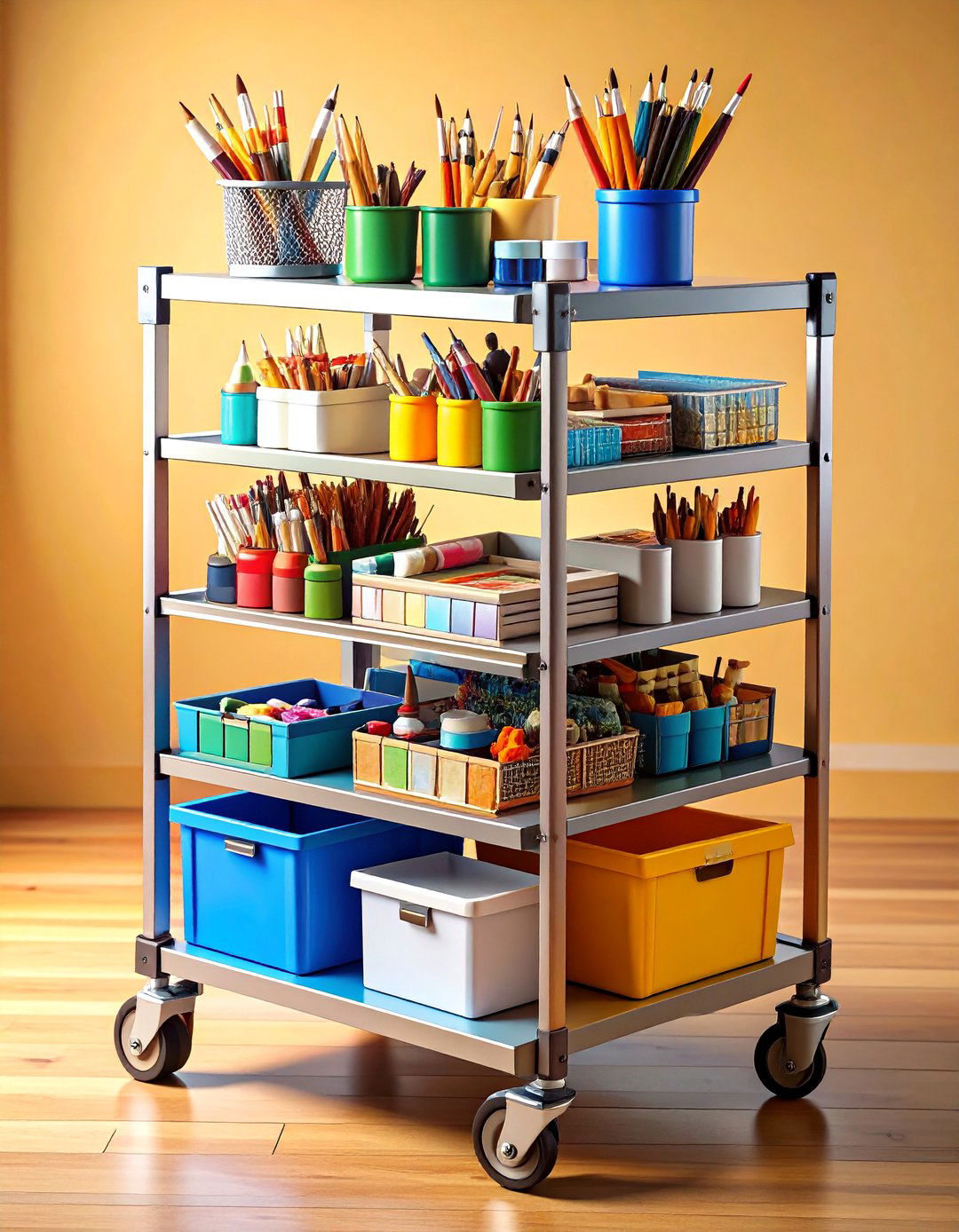
Three-tiered rolling carts serve as mobile command centers for art room organization, allowing you to transport supplies wherever creativity strikes . These versatile storage units keep brushes, paints, and tools within easy reach while maintaining the flexibility to move your entire workspace. Position your rolling cart adjacent to your main work table to create additional surface area while keeping frequently used supplies organized by category . The mobility aspect proves invaluable when cleaning your art room or when working on large projects that require different viewing angles. Choose carts with different shelf heights to accommodate various supply sizes, from tall brush holders to flat storage for paper and canvases . This organizational system transforms your art room into a highly efficient creative workspace.
4. Multipurpose Art Room and Home Office Combo

Combining your art room with a home office creates a dynamic multipurpose space that serves both creative and professional needs . Use room dividers, shelving units, or storage cabinets to delineate the workspace areas while maintaining an open, flowing feel . Install dual-purpose furniture like a desk that can accommodate both computer work and art projects, switching between functions as needed. Wall-mounted storage solutions keep art supplies organized while freeing up desk space for office tasks. This arrangement proves particularly valuable for artists who also work from home, providing seamless transitions between creative and business activities. Consider positioning both areas near natural light sources to benefit both types of work , creating a cohesive environment that supports productivity and creativity.
5. Art Room Pegboard Organization Systems
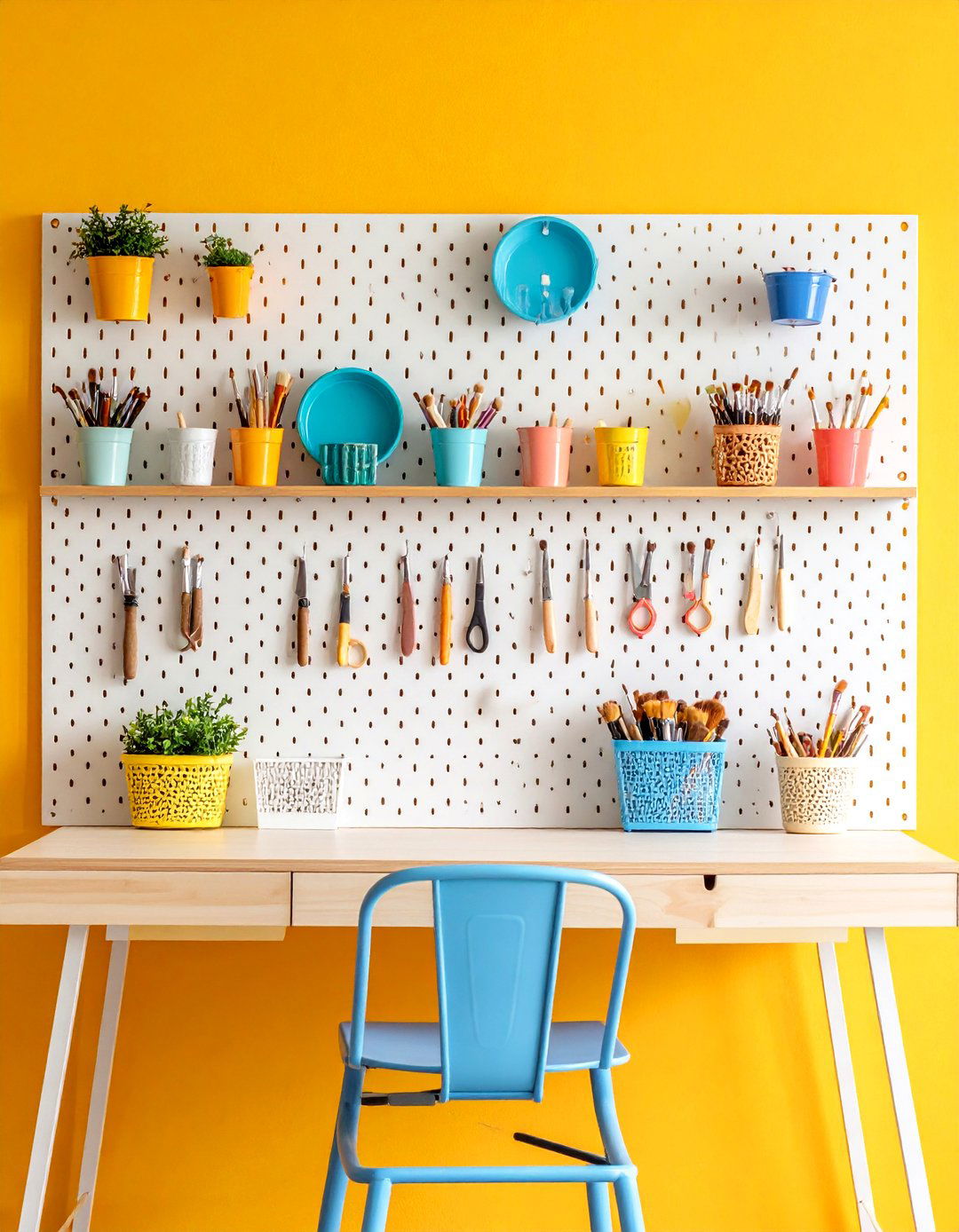
Pegboard walls transform art room storage by creating customizable, visible organization systems that adapt to your changing supply needs . These versatile mounting systems accommodate everything from scissors and rulers to brushes and small containers using hooks, shelves, and baskets. Install pegboard at eye level above your work surface to keep essential tools within easy reach while maintaining a clean workspace . The visual accessibility of pegboard storage helps prevent supply hoarding and makes it easy to see when items need restocking. Paint your pegboard to match your art room's color scheme, turning functional storage into an attractive design element . This system grows with your art practice, allowing you to reconfigure storage arrangements as your techniques and supply needs evolve.
6. Closet-Converted Art Room Spaces

Converting an unused closet into a compact art room maximizes space efficiency while creating a private creative sanctuary . Remove existing closet rods and install shelving, a fold-down desk, and adequate lighting to create a functional workspace . This enclosed environment provides excellent focus for detailed work while containing any creative mess within a designated area. Utilize the closet's existing shelving structure for art supply storage, adding small containers and organizers to maximize vertical space . The intimate scale of a closet art room encourages concentrated work sessions and can be easily closed off when not in use. Ensure proper ventilation and lighting in your closet art room to create a comfortable working environment , potentially adding a small fan and LED strip lighting for optimal conditions.
7. Gallery Wall Art Room Display Ideas
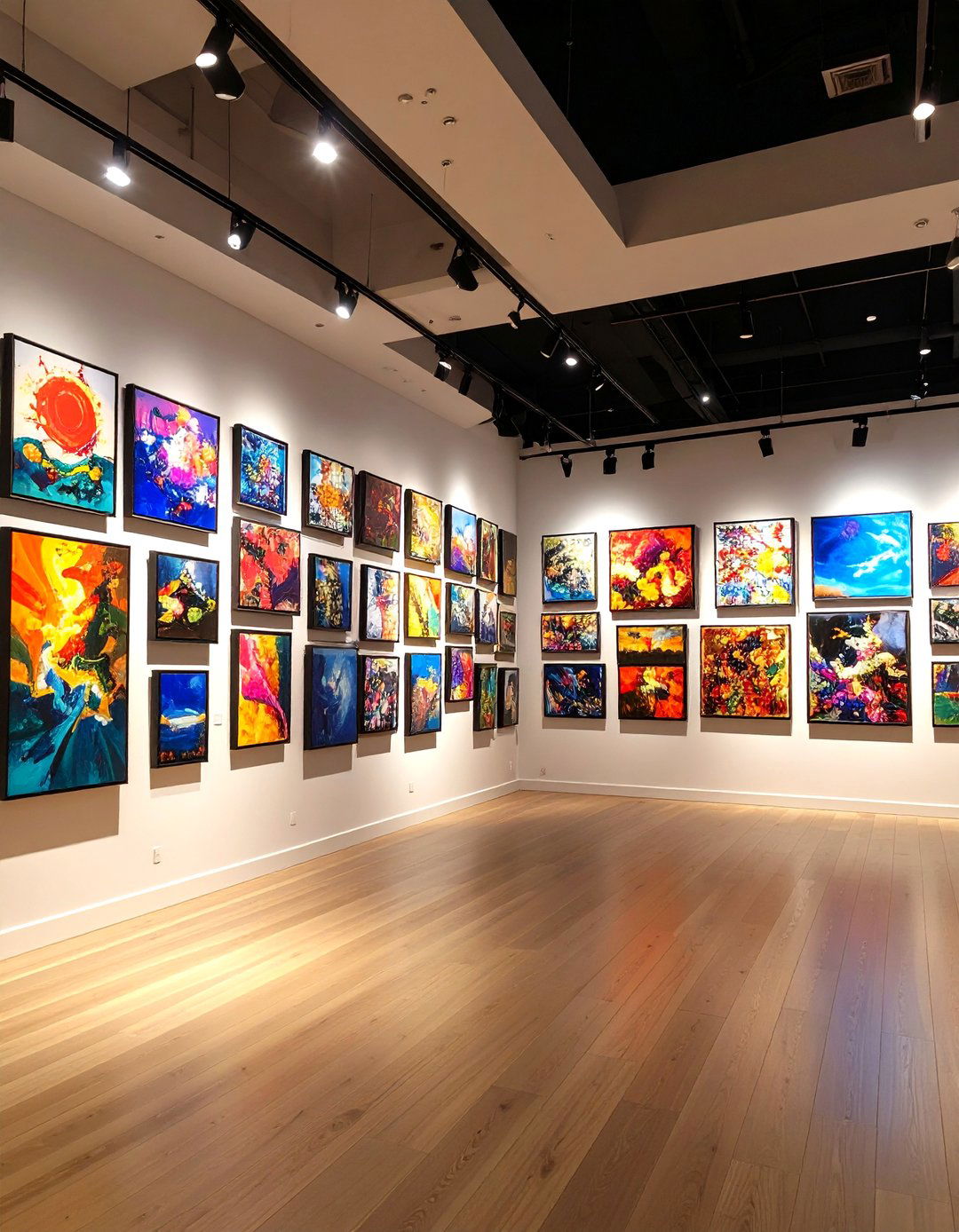
Creating a gallery wall in your art room serves dual purposes: displaying finished work and providing ongoing inspiration for new projects . Arrange artwork at eye level using a mix of frame sizes and styles to create visual interest while showcasing your artistic journey . This dynamic display system allows you to rotate pieces regularly, keeping your art room environment fresh and motivating. White walls provide the perfect backdrop for colorful artwork, creating a gallery-like atmosphere that elevates the perceived value of your creative space. Consider installing picture ledges or wire systems that make changing displays simple and damage-free. Use picture lights or track lighting to illuminate your gallery wall, creating professional presentation standards that inspire higher-quality work .
8. Basement Art Room Conversion Projects

Basement art rooms offer generous space for large-scale projects while providing natural separation from household activities . Focus on moisture control, adequate lighting, and proper ventilation when converting basement space into a functional art room . The concrete floors typical in basements prove ideal for messy art projects, eliminating concerns about spills or damage. Install ceiling-mounted lighting systems to overcome the typically dim basement environment, using daylight-balanced LED fixtures for accurate color work . Consider the basement's temperature stability as an advantage for storing art supplies and works in progress . This location provides excellent sound isolation, perfect for art room activities that might disturb other household members while offering unlimited creative freedom.
9. Magnetic Art Room Storage Innovations
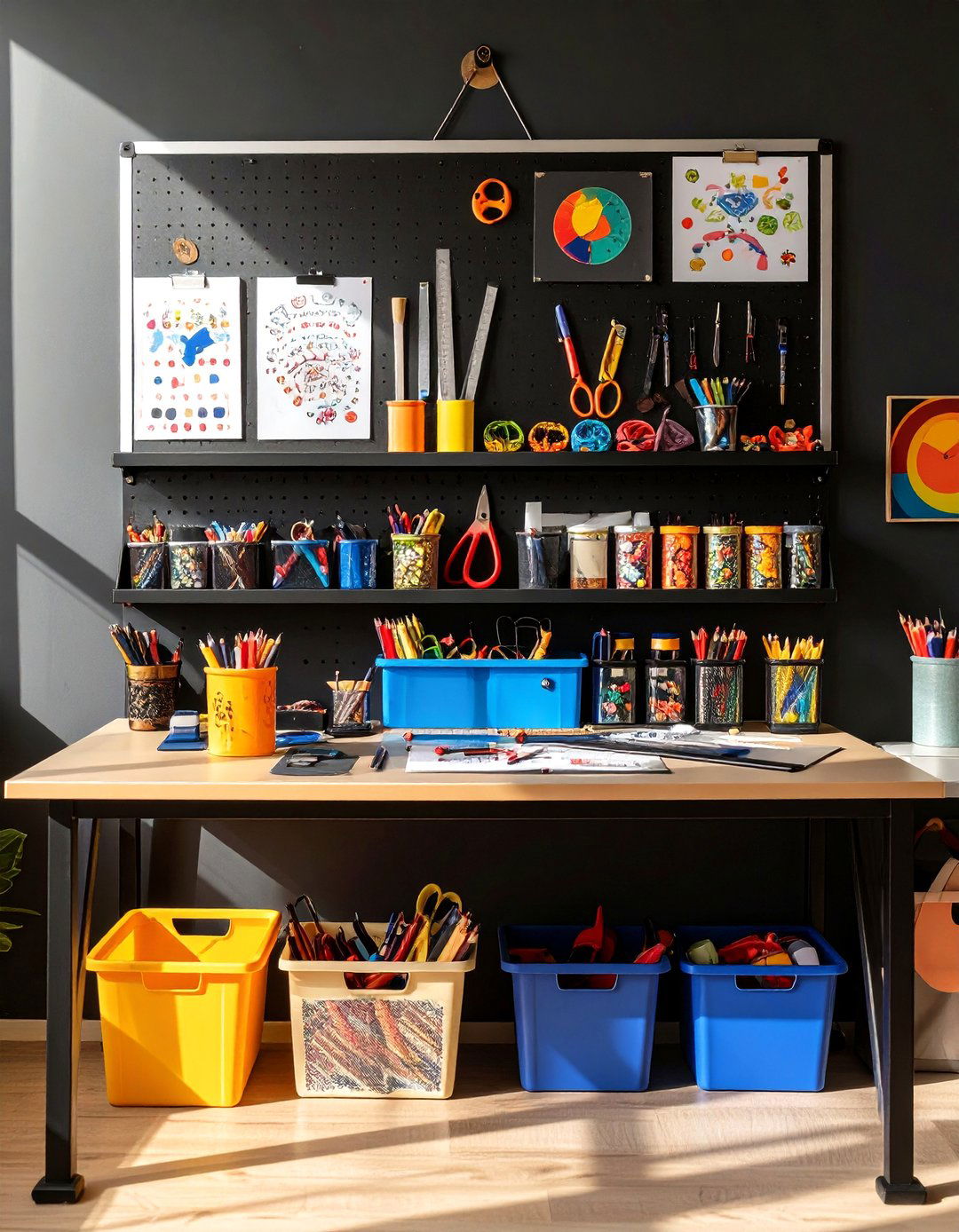
Magnetic storage systems offer ingenious solutions for art room organization, utilizing vertical surfaces to keep metal tools and supplies easily accessible . Create custom magnetic boards using cookie sheets, metal panels, or magnetic paint to hold scissors, rulers, and other metal implements . This storage method keeps frequently used tools visible and within reach while freeing up valuable desk and drawer space. Attach small magnetic containers to store paper clips, thumbtacks, and other tiny supplies that tend to get lost in traditional storage systems . The instant accessibility of magnetic storage reduces workflow interruptions and maintains creative momentum. Combine magnetic storage with color-coding systems to create intuitive organization that family members can easily maintain , ensuring your art room stays organized even with multiple users.
10. Attic Art Room Hideaway Designs
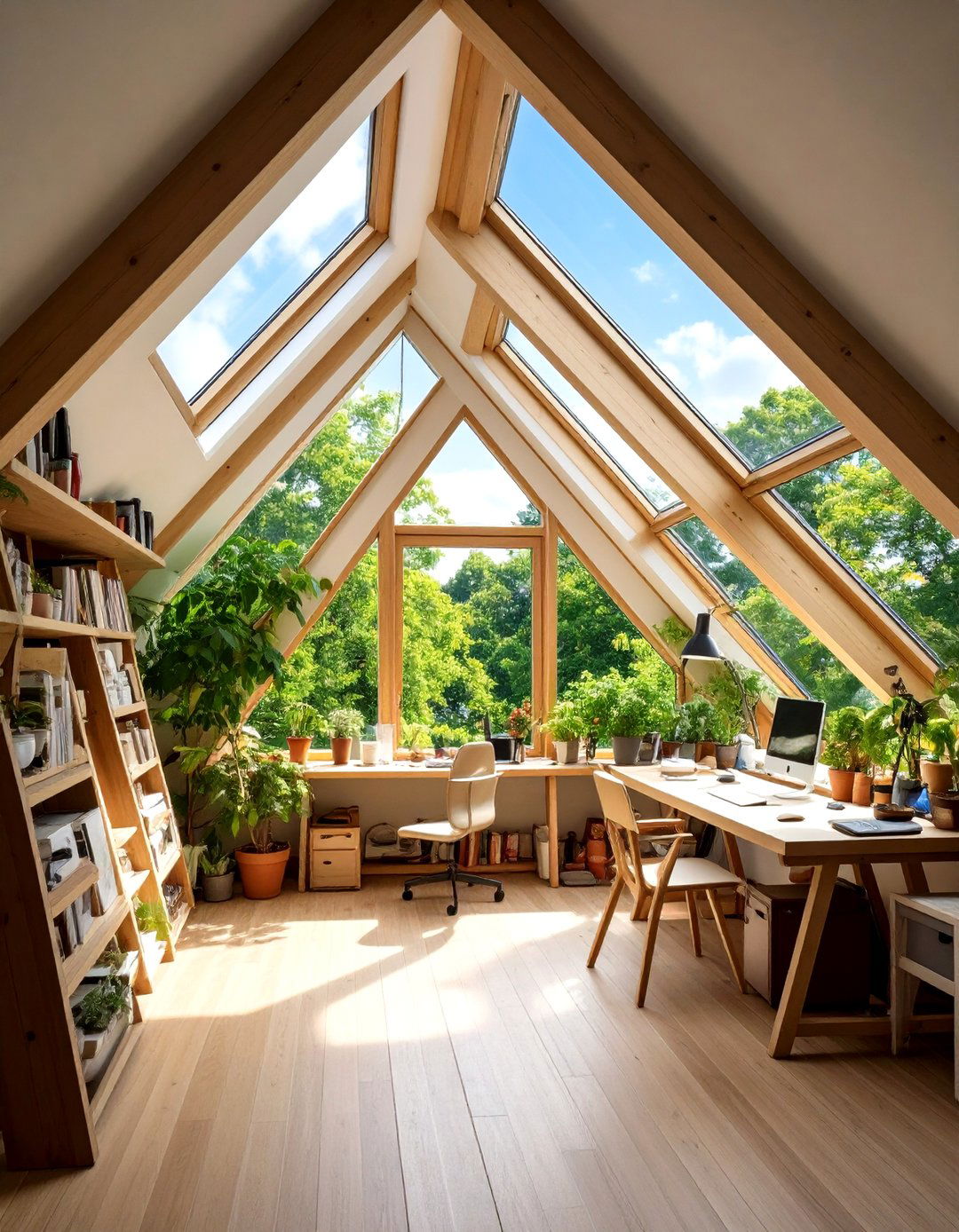
Attic spaces provide secluded art room environments perfect for uninterrupted creative work while utilizing otherwise unused square footage . Address heating and cooling concerns in attic art rooms to protect both artwork and supplies from temperature extremes . The sloped ceilings characteristic of attics create unique storage opportunities using custom-built shelving and organizing systems. Install skylights or dormer windows to bring natural light into attic art rooms, creating inspiring work environments with views of treetops or sky . Consider the structural implications of heavy art supplies and furniture when planning attic art rooms, ensuring proper weight distribution . This elevated creative space offers psychological benefits, providing a literal retreat from daily life where artistic focus can flourish.
11. Under-Stairs Art Room Nook Creation
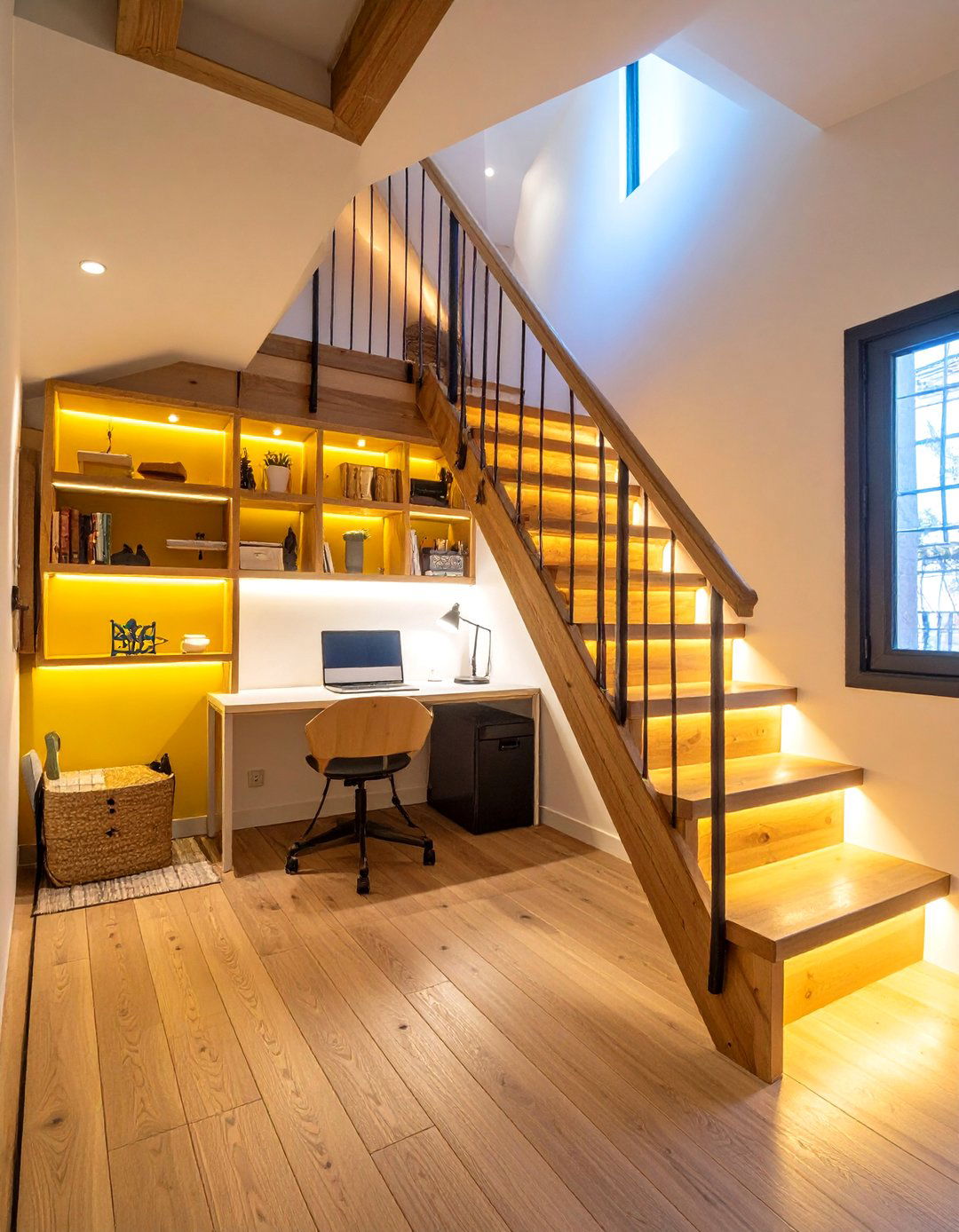
The space beneath staircases offers unique opportunities for compact art room installations that maximize every square foot of available area . Install wall-mounted easels, fold-down desks, and custom shelving to create functional workspace within the angular confines of under-stair areas . This often-overlooked space provides natural privacy and sound dampening for concentrated creative work. Address lighting challenges in under-stair art rooms with strategic placement of LED strips or track lighting systems . The cozy, cave-like atmosphere of under-stair spaces can enhance creative focus while providing a dedicated area that doesn't compete with other household functions. Ensure adequate electrical access when planning under-stair art rooms, as these spaces often lack convenient outlets for lighting and equipment .
12. Garage Art Room Workshop Setups
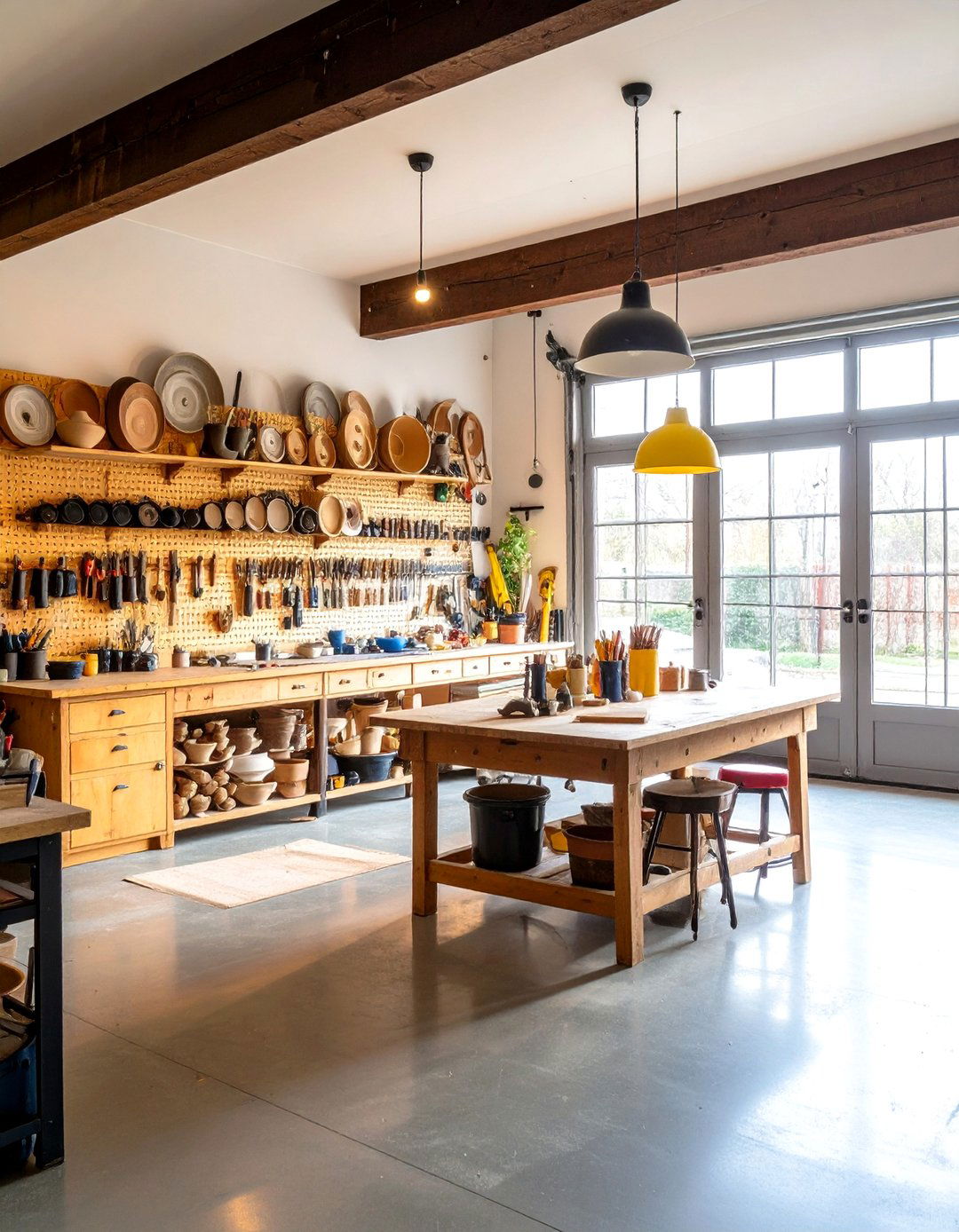
Garage art rooms excel at accommodating large-scale projects and messy creative work while providing excellent ventilation through overhead doors . The concrete floors and utility connections typical in garages create ideal conditions for pottery work, sculpture, and other art forms requiring robust workspace . Install pegboard systems, workbenches, and storage solutions to transform garage space into highly functional art room environments . The generous ceiling height in most garages allows for tall easels and large canvas storage systems. Consider seasonal temperature variations when planning garage art rooms, possibly adding climate control for year-round comfort . This location proves particularly valuable for artists working in multiple mediums, providing space for both delicate and heavy-duty creative activities while maintaining separation from living areas.
13. Art Room Color Psychology and Paint Schemes
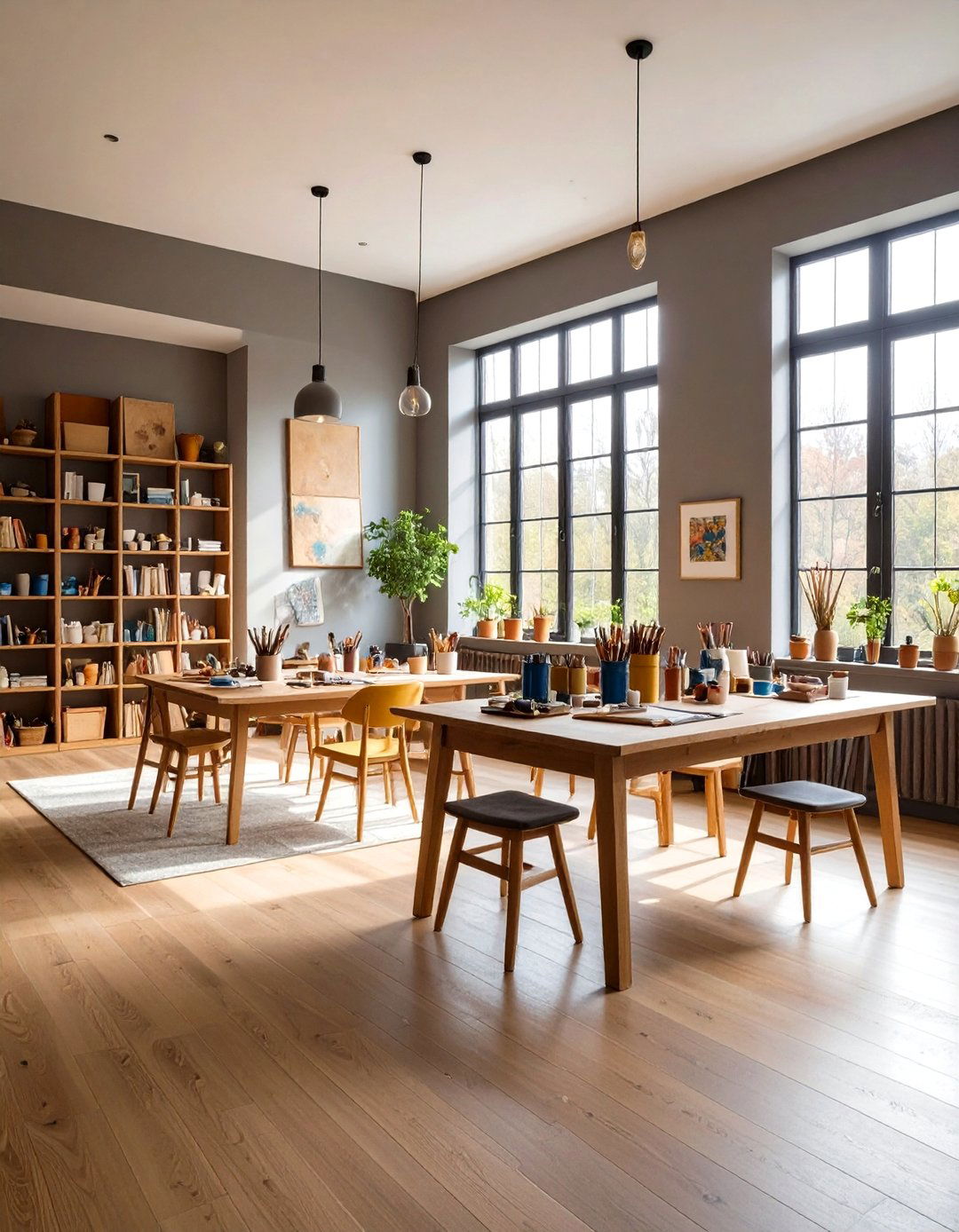
Mid-gray walls provide optimal backgrounds for art room spaces, offering neutral environments that don't compete with artwork while maintaining color accuracy . Current design trends favor warm, earthy tones that create cozy, inspiring environments while supporting focus and creativity . White walls create gallery-like atmospheres that showcase artwork beautifully while maximizing light reflection throughout the space. Consider how wall colors interact with your primary art mediums—cool grays work well for oil painters, while warm whites complement watercolor work. Avoid highly saturated wall colors that can affect color perception and create visual competition with your artwork . The psychological impact of color in art rooms extends beyond aesthetics, influencing mood, energy levels, and creative output . Choose colors that support your artistic goals while creating an environment where you genuinely enjoy spending time.
14. Digital Art Room Technology Integration
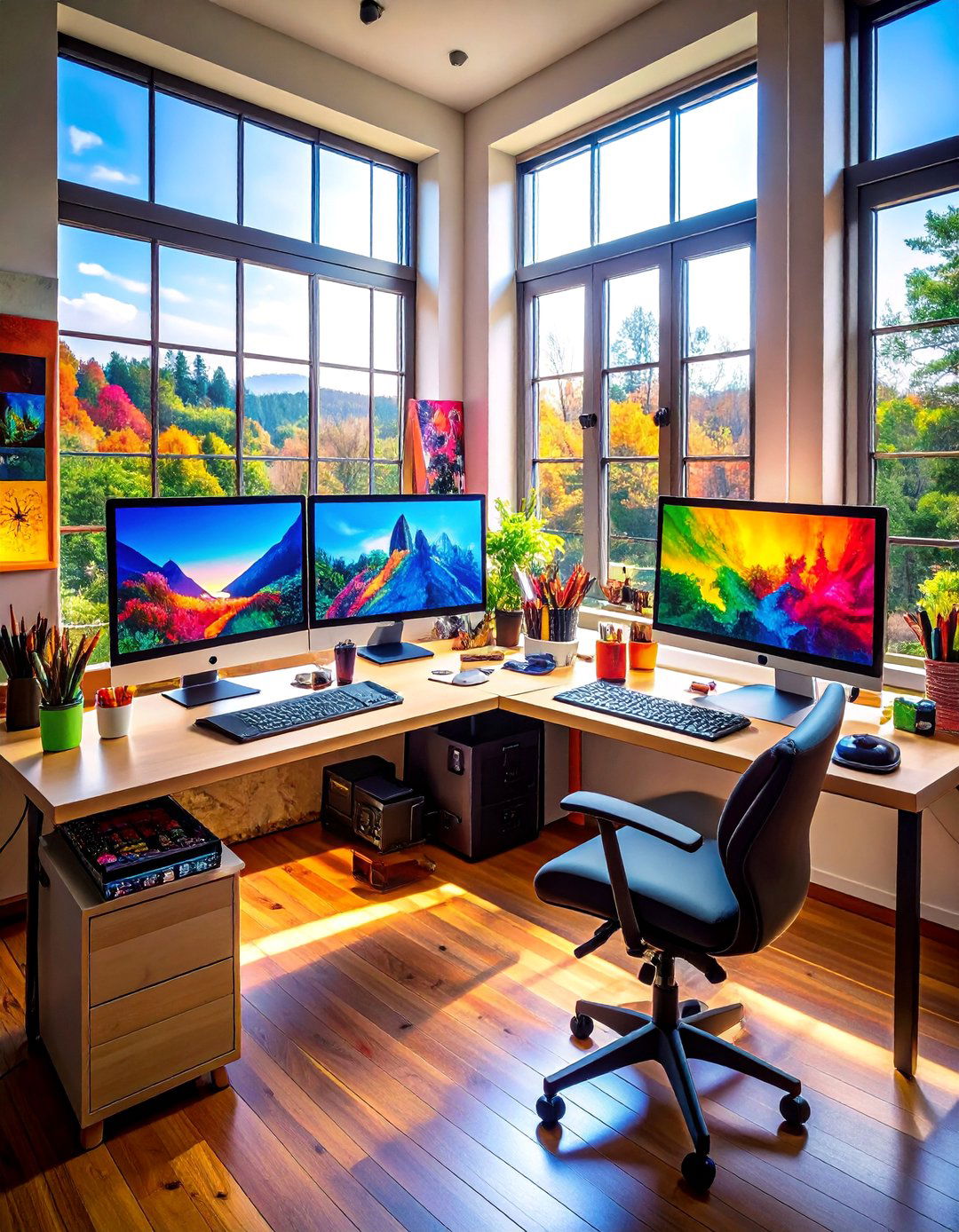
Modern art rooms increasingly incorporate digital design stations alongside traditional art supplies, creating hybrid spaces that support both digital and physical creative work . Install ergonomic desk setups with adjustable monitors, drawing tablets, and proper cable management to create professional digital art environments . Use cloud storage solutions like Google Drive to organize digital artwork files and lesson plans, ensuring easy access from any device . Consider the electrical demands of digital equipment when planning art room layouts, ensuring adequate outlets and possibly adding dedicated circuits for high-power devices. Integrate charging stations for tablets and phones into your art room design, keeping creative tools powered and ready for use. This technology integration enables seamless transitions between traditional and digital art creation while preparing your space for evolving creative practices.
15. Dining Room Art Room Conversions
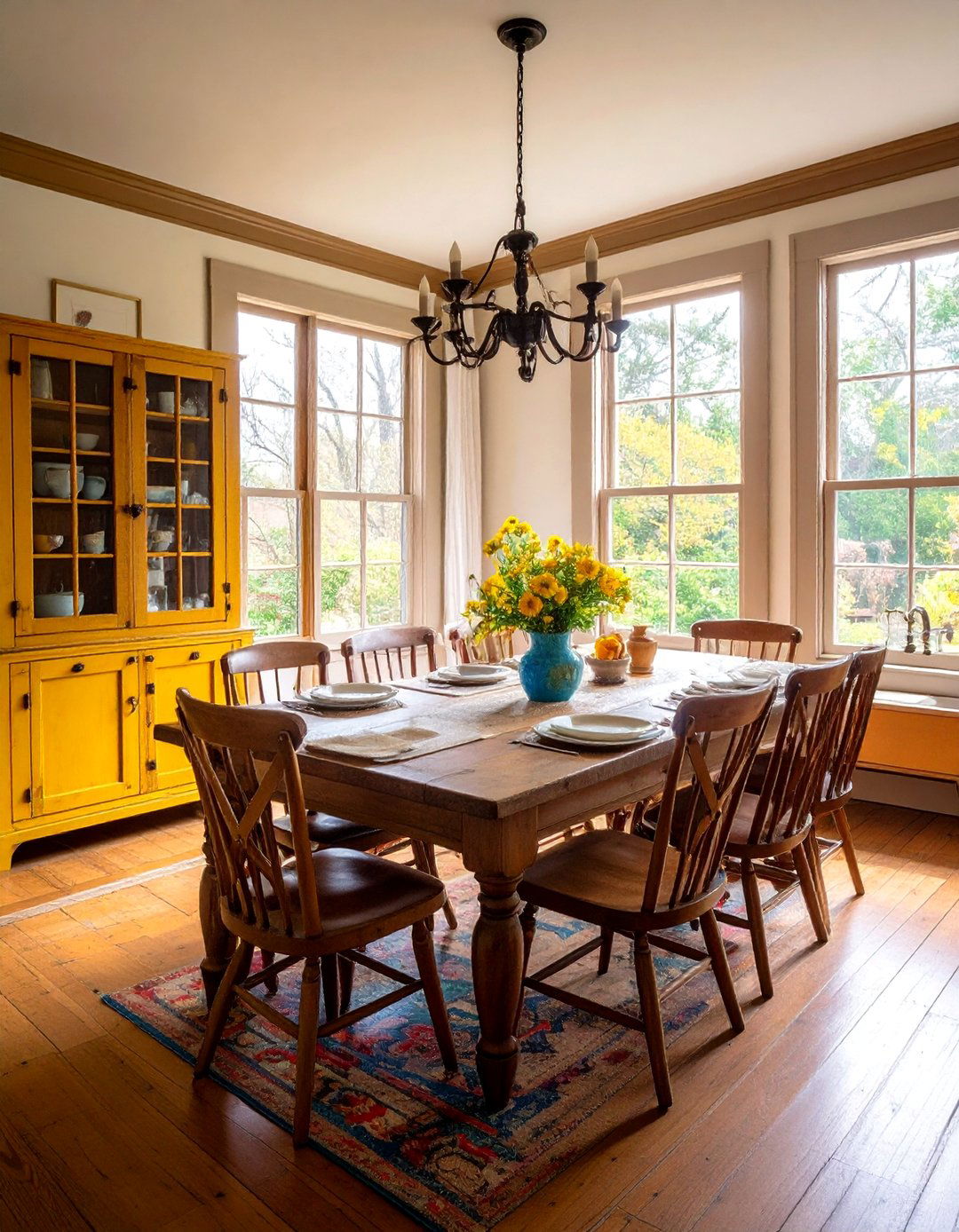
Repurposing formal dining rooms as art rooms provides generous space and often excellent natural light through large windows designed to enhance mealtime ambiance . The existing dining table can serve as a large work surface, while built-in china cabinets offer ready-made storage for art supplies . Position your art room near the kitchen to take advantage of sink access for cleanup and convenient snack preparation during long creative sessions . This central location creates family-friendly art spaces where creative activities can happen alongside daily life. Consider using the dining room's existing lighting fixtures as a foundation for art room illumination, supplementing with task lighting as needed . The formal atmosphere of dining rooms can elevate the perceived importance of creative work, encouraging more serious artistic pursuits while maintaining the room's inherent hospitality.
16. Art Room Easel and Display Systems
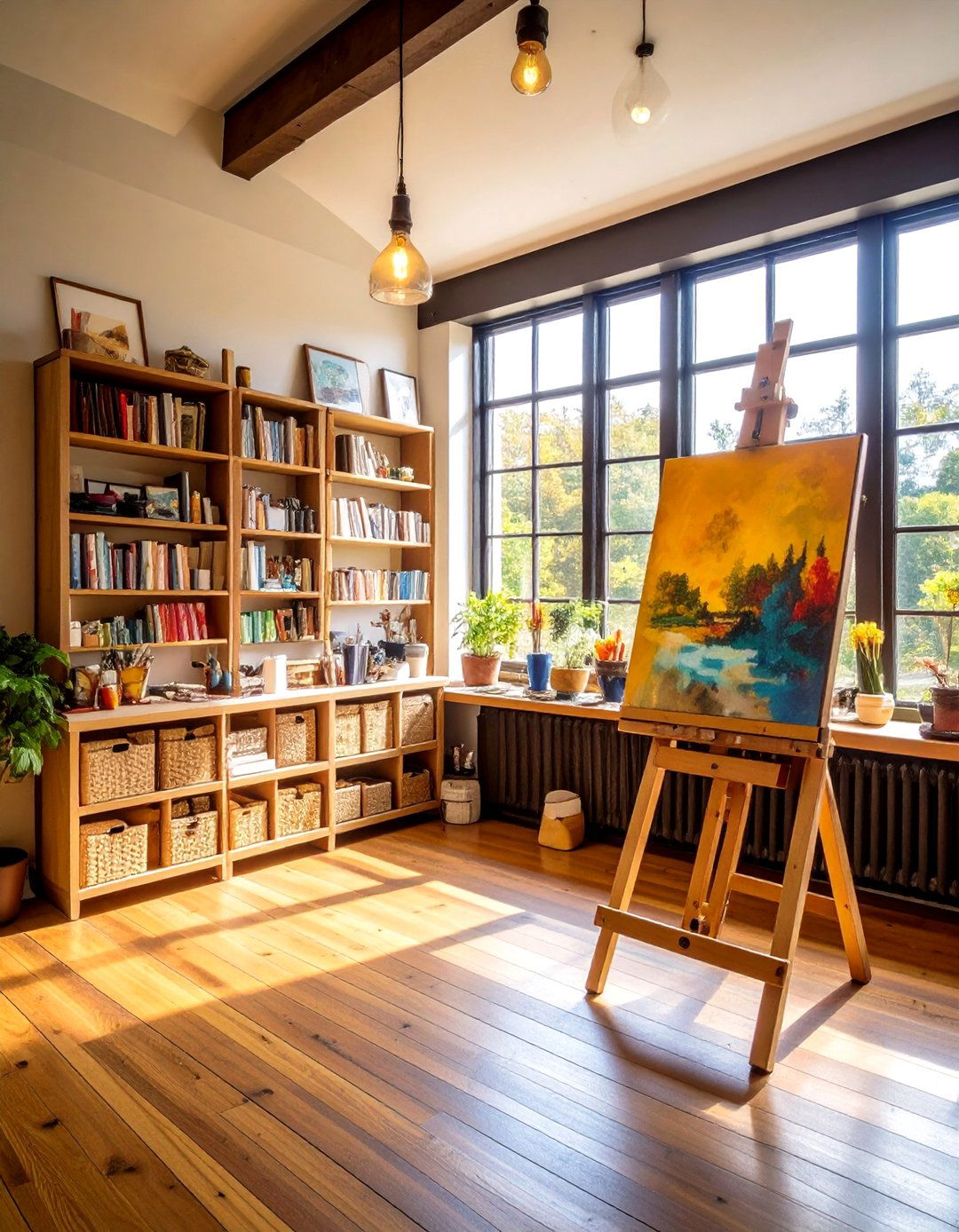
Adjustable easels form the foundation of effective art room design, providing stable platforms that accommodate various canvas sizes and artistic techniques . Wall-mounted easels save floor space in compact art rooms while offering convenient storage options for works in progress . Create wire display systems using clothespins and sturdy wire to showcase finished pieces without putting holes in walls . Consider investing in easels with built-in storage compartments for brushes, paints, and other frequently used supplies. Position easels near windows to take advantage of natural light while ensuring artificial lighting systems can provide adequate illumination for evening work. Ensure your easel placement doesn't create shadows from your working arm, which can interfere with color perception and detailed work . Quality easel systems grow with your artistic development, supporting everything from small sketches to large-scale paintings.
17. Art Room Ventilation and Safety Features
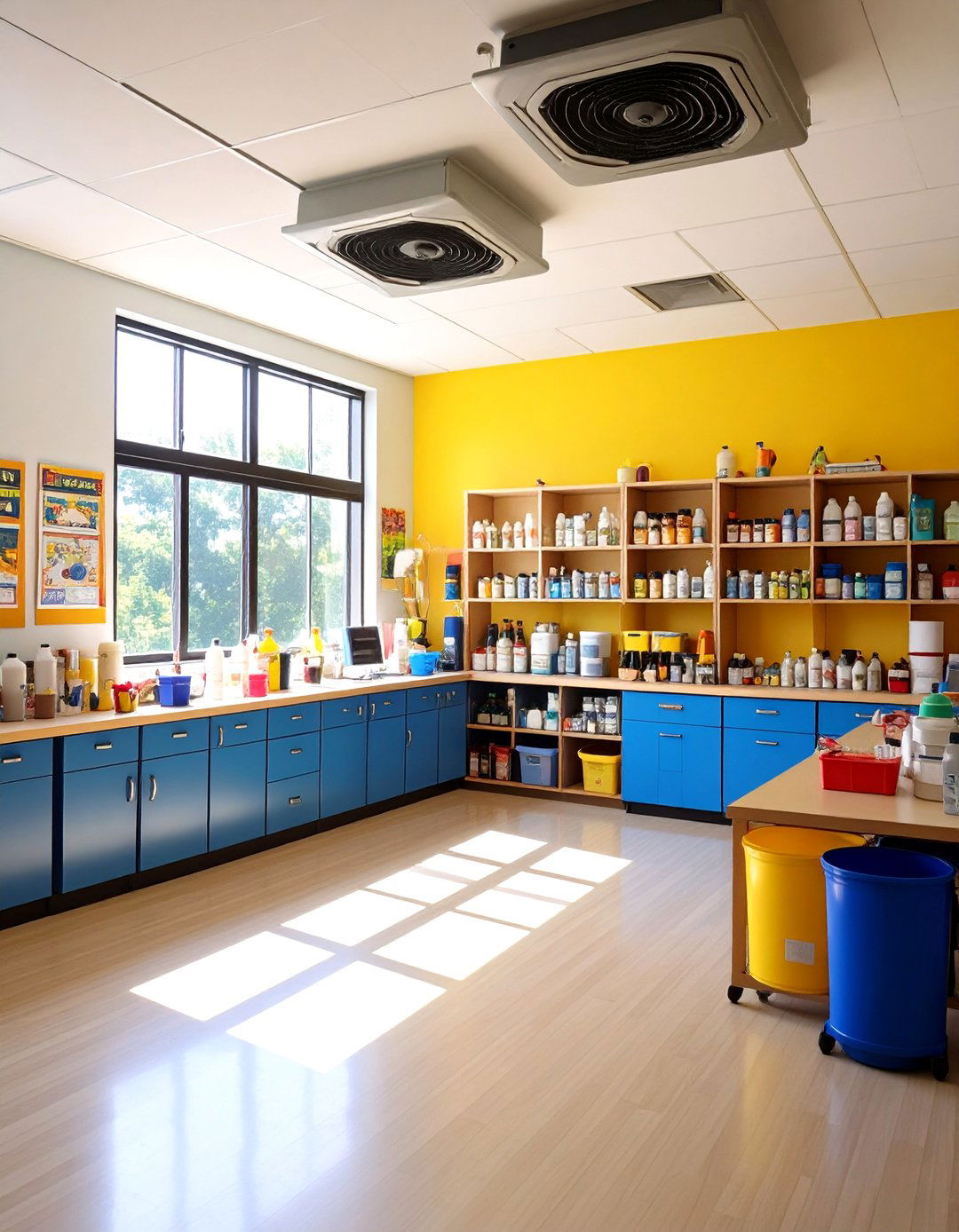
Proper ventilation in art rooms protects health while working with paints, solvents, and other materials that may release fumes . Garage art rooms benefit from overhead door ventilation systems that provide excellent air circulation for messy or odorous projects . Install exhaust fans or air filtration systems in enclosed art rooms to maintain air quality during extended creative sessions. Consider the placement of ventilation systems to avoid disturbing lightweight materials or creating drafts that affect delicate work . Keep windows accessible for natural ventilation, especially when working with oil paints or other materials requiring adequate air circulation . Safety considerations extend beyond ventilation to include proper storage of hazardous materials, adequate lighting to prevent accidents, and clear pathways that prevent trips and falls. Install smoke detectors and keep fire extinguishers appropriate for art materials readily available in your creative space .
18. Art Room Furniture with Built-in Storage
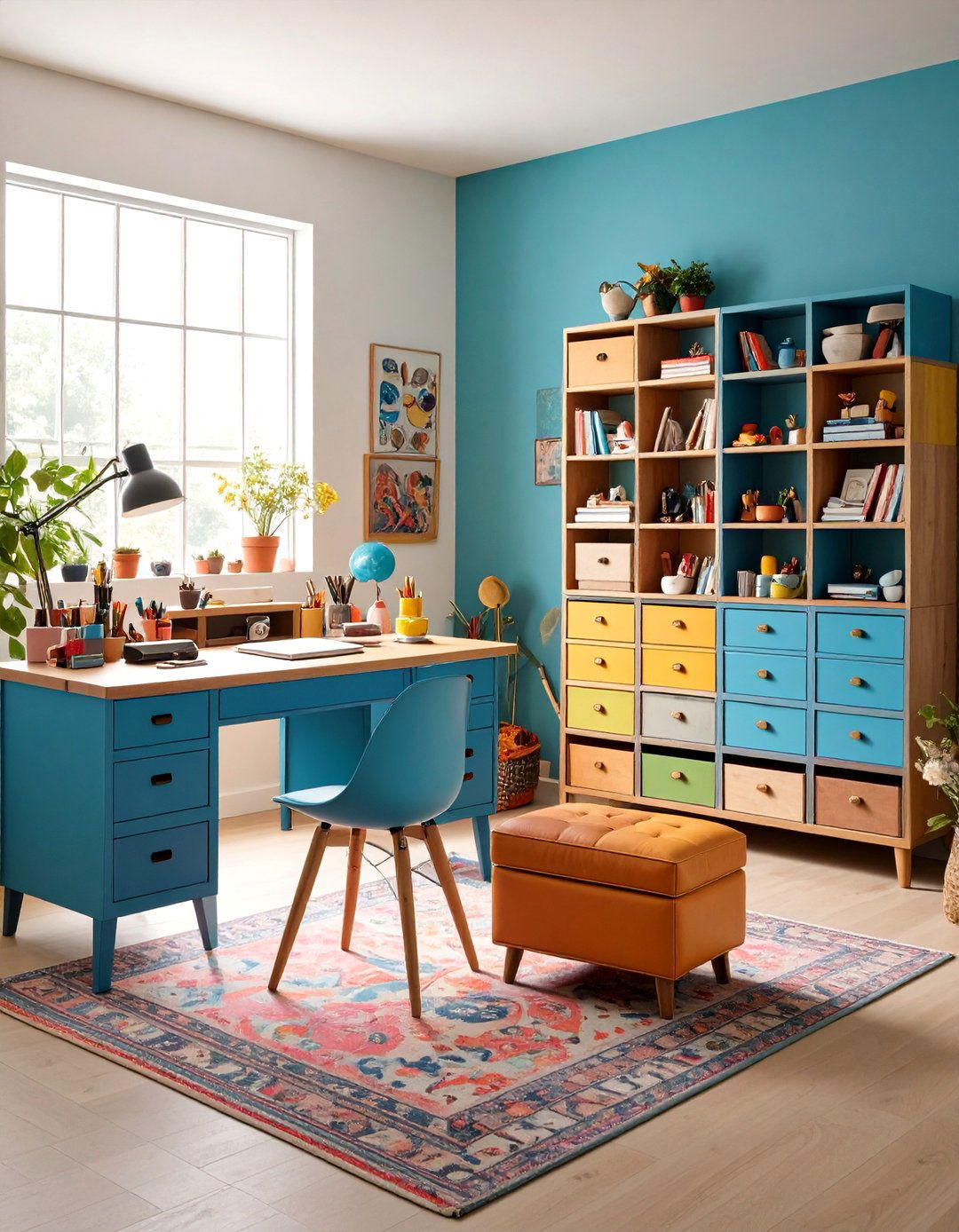
Multi-functional furniture maximizes art room efficiency by combining workspace with organized storage solutions . Desks with built-in drawers, filing cabinets, and shelving provide immediate access to supplies while maintaining clean work surfaces . Consider furniture pieces that serve multiple purposes, such as storage ottomans that provide seating while hiding art supplies . Vintage furniture pieces like dressers and card catalogs offer unique storage solutions while adding character to art room environments . Install curtains or cabinet doors on open storage areas to hide supplies when entertaining guests or when your art room serves multiple purposes . The right furniture choices create art rooms that feel intentional and organized rather than cluttered, supporting creative focus while maintaining household harmony.
19. Art Room Lighting for Photography and Documentation
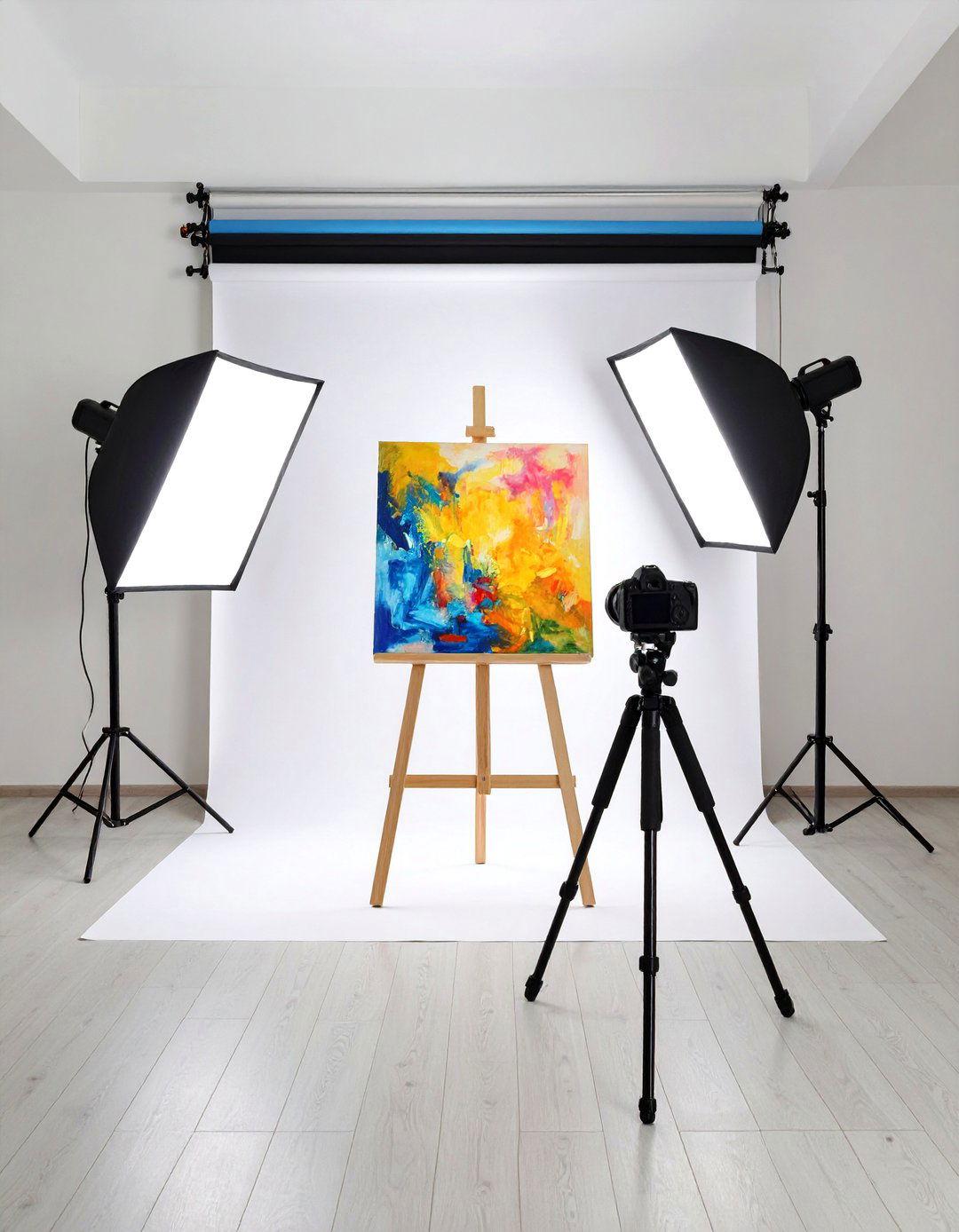
Specialized lighting setups in art rooms enable high-quality photography of finished artwork, essential for portfolio development and online sharing . Use adjustable LED lights positioned at 45-degree angles to minimize glare and shadows when photographing glossy paintings or textured artwork . Color-tunable lighting systems allow you to adjust both temperature and intensity to match different documentation needs or display requirements . Consider portable lighting solutions that can be easily repositioned for different photography setups without permanent installation . Maintain consistent lighting conditions for accurate color reproduction in photographs, ensuring your digital documentation accurately represents the physical artwork . This dual-purpose approach to art room lighting supports both the creation process and the professional presentation of finished work.
20. Art Room Seasonal and Natural Element Integration
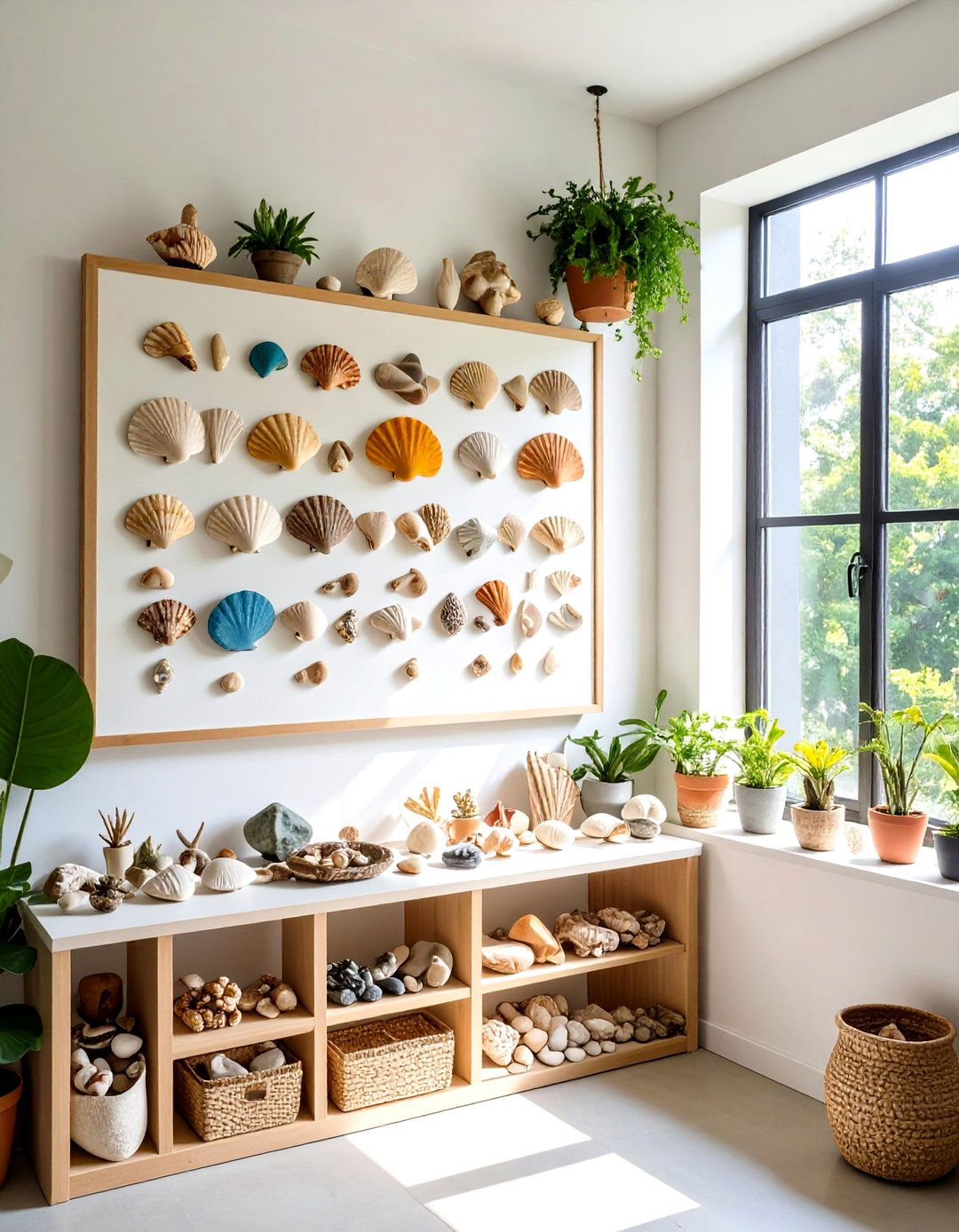
Incorporating natural elements into art room design creates inspiring environments that change with the seasons, maintaining fresh creative energy . Display seasonal collections like shells, leaves, or stones as both inspiration and subject matter for artistic exploration . Follow principles from educational philosophies like Reggio Emilia by surrounding artists with carefully chosen natural elements that soothe and inspire . Position work areas near windows that overlook gardens or natural landscapes to provide ongoing inspiration and connection to the outdoors. Consider living plants that thrive in art room conditions, adding oxygen and natural beauty while requiring minimal maintenance . Rotate natural displays seasonally to maintain interest and provide new inspiration for artistic work . This approach creates art rooms that feel alive and connected to the natural world, supporting both creativity and well-being.
Conclusion:
The perfect art room emerges from understanding that creative spaces must serve both functional and inspirational purposes, adapting to individual artistic needs while maintaining practical organization . Whether you're working with a dedicated room or carving out a corner, the key elements remain consistent: adequate lighting, thoughtful storage, and an environment that encourages regular creative practice . From natural north-facing windows to professional LED lighting systems, proper illumination forms the foundation of any successful art room . Smart storage solutions keep supplies organized and accessible while maintaining the clean, inspiring environment that supports artistic growth . Remember that your art room will evolve with your creative journey—start with the basics and build upon them as your skills and interests develop. The most important step is simply claiming your space and beginning to create, transforming any area into a sanctuary where artistic expression can flourish.


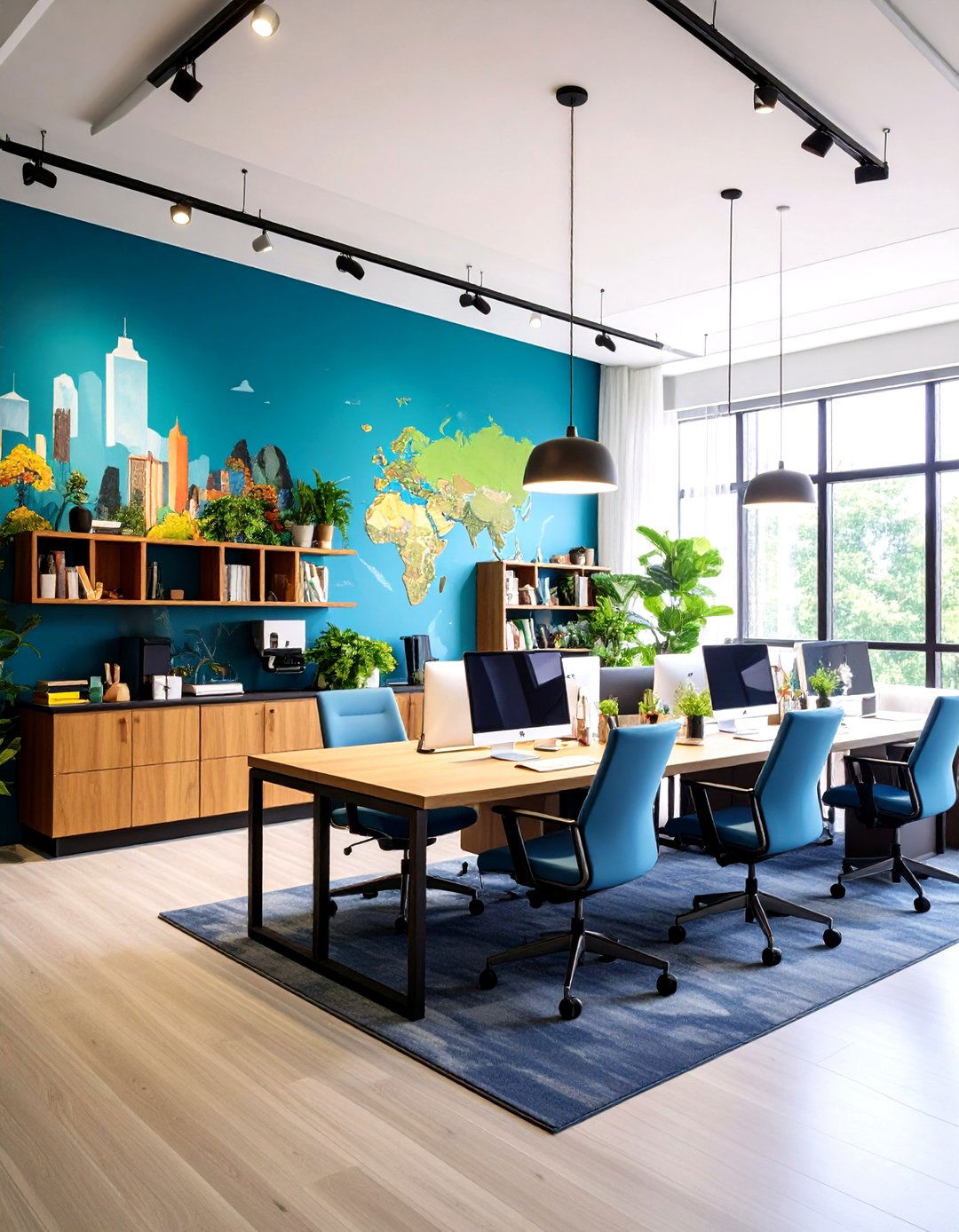
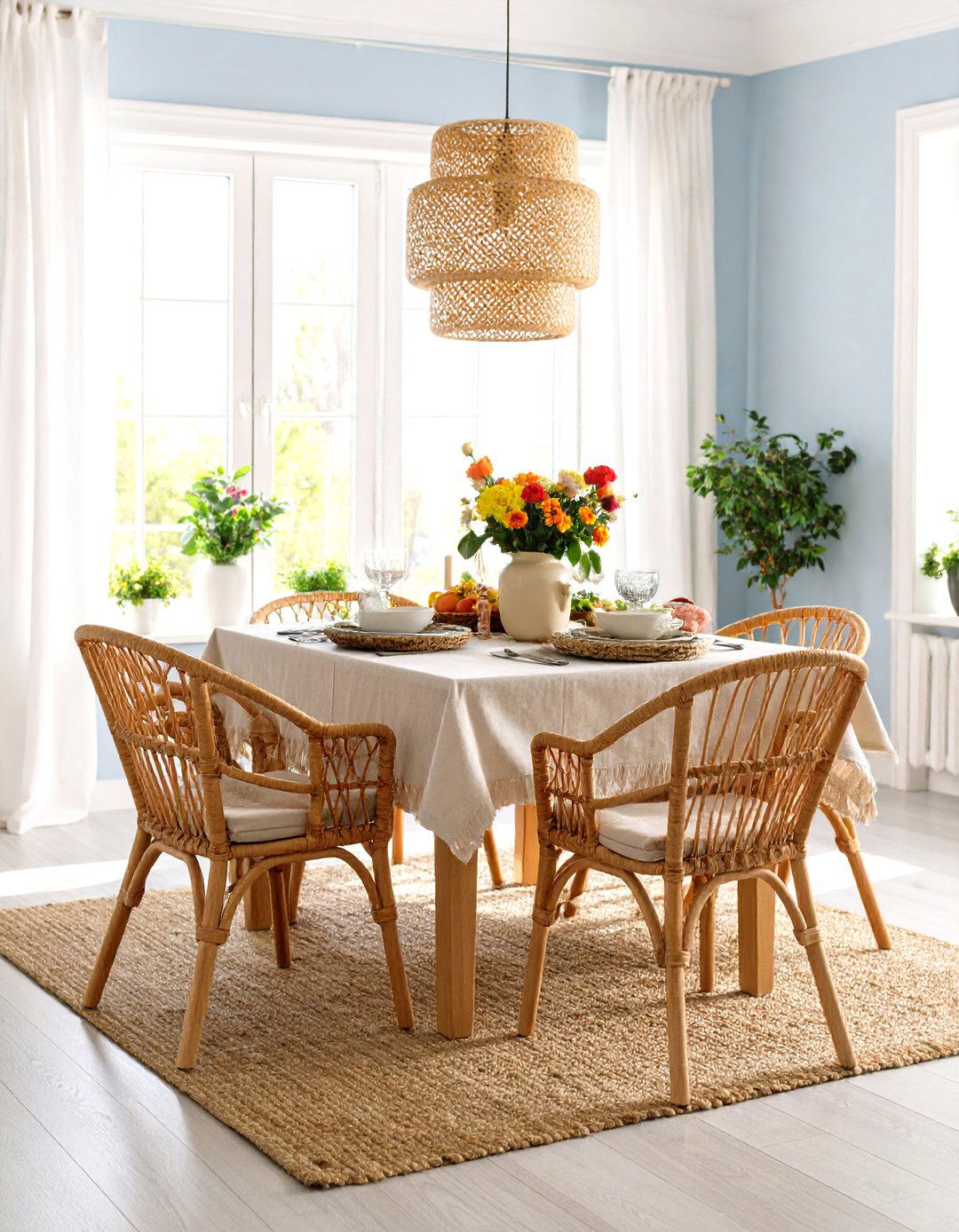

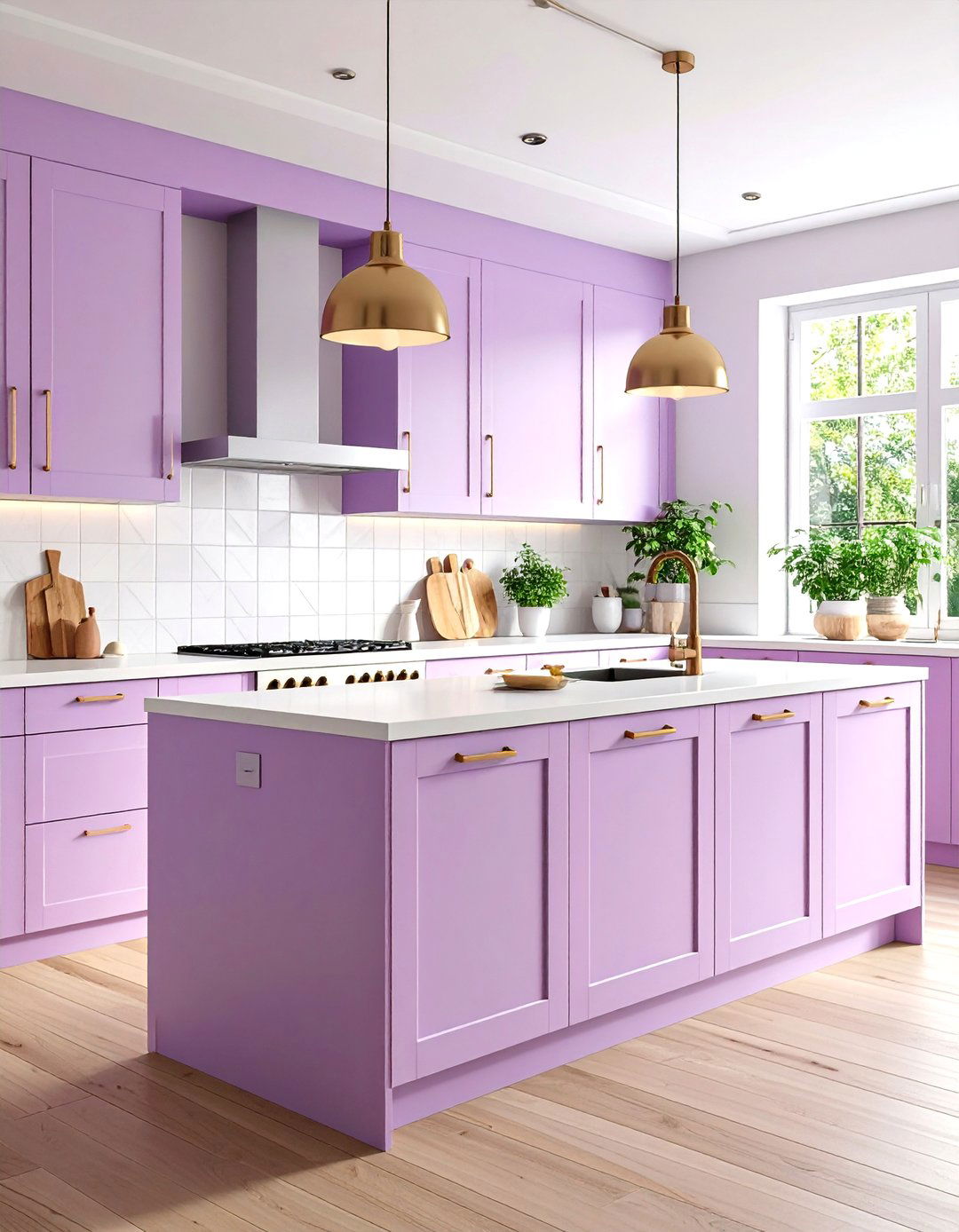
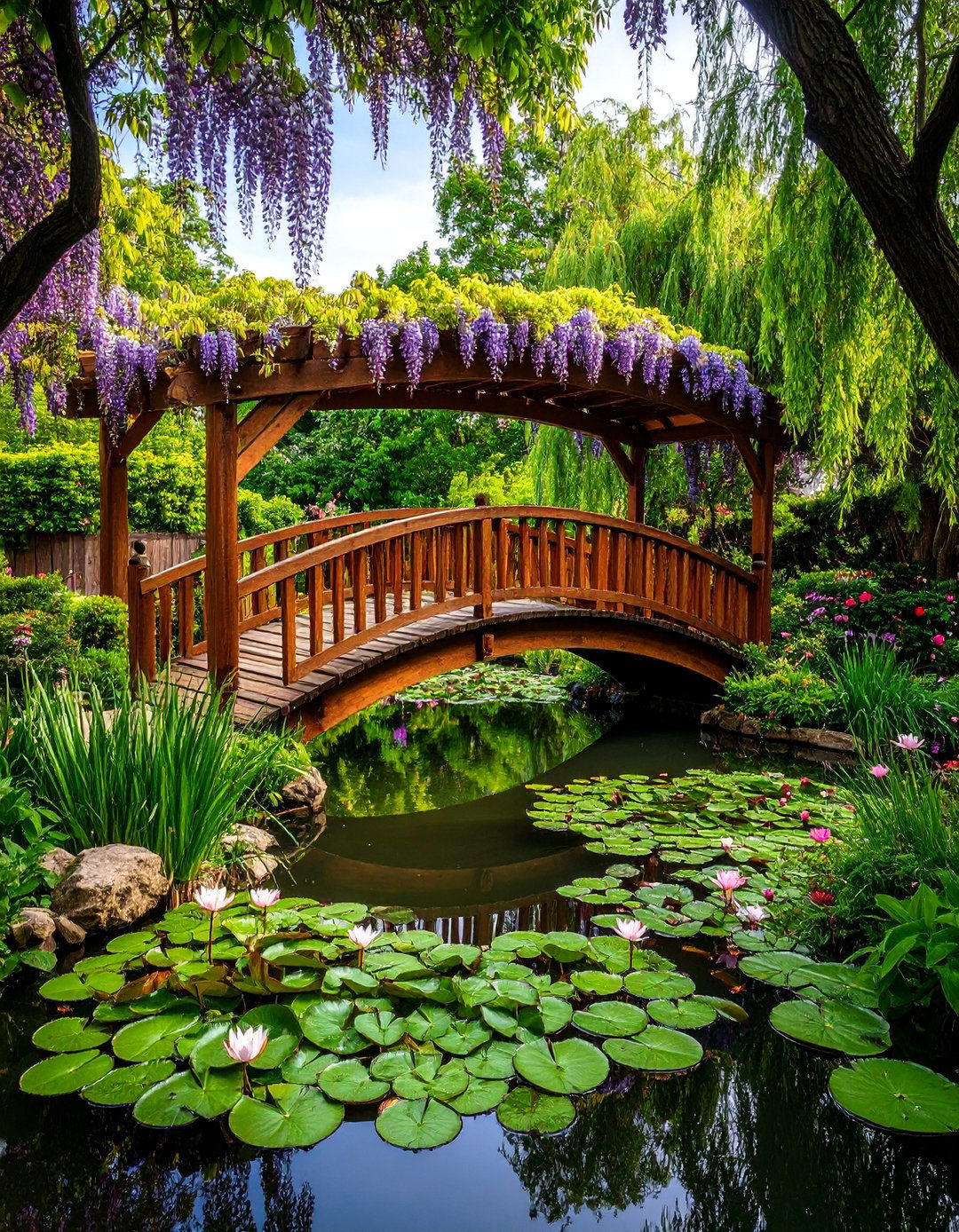
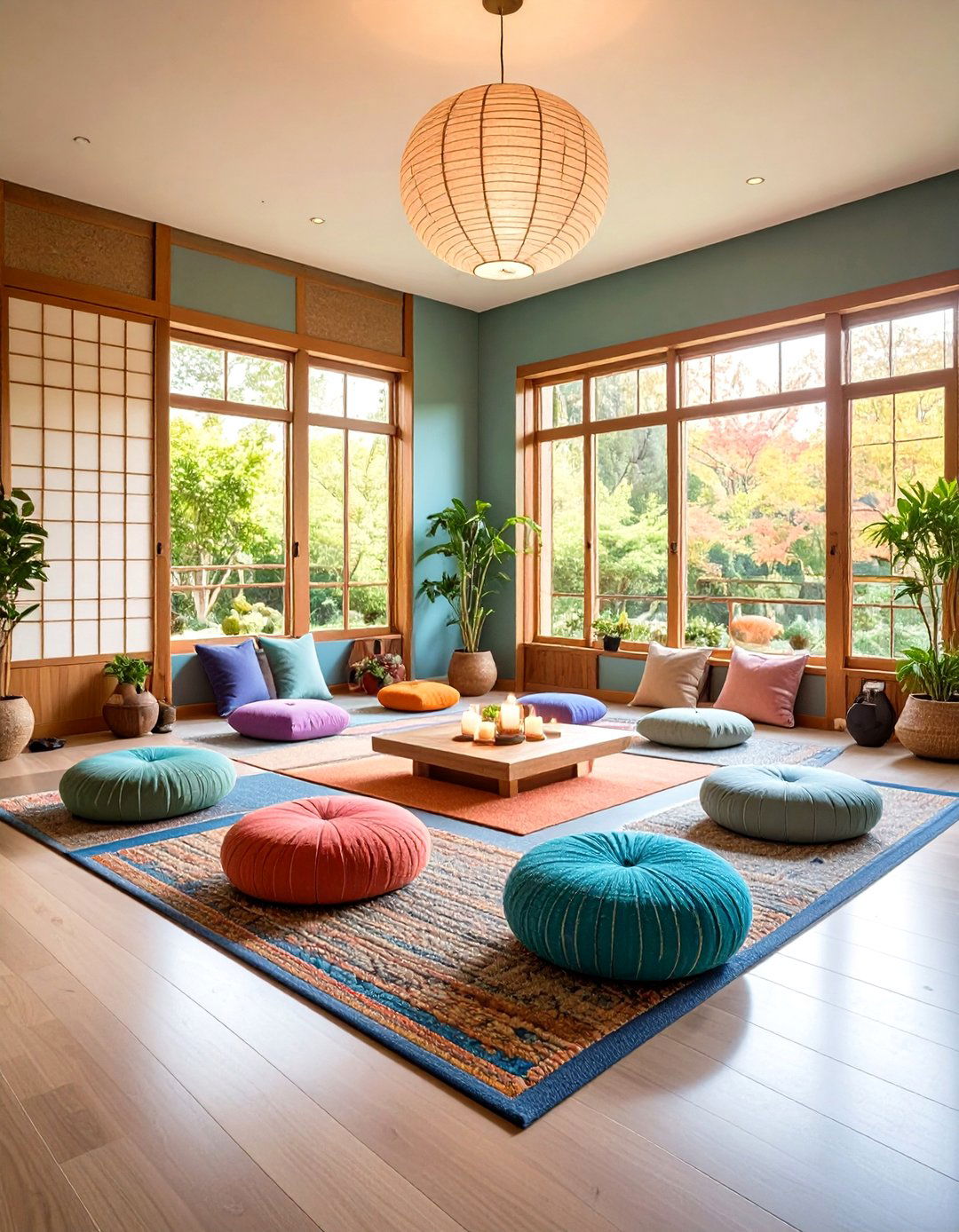
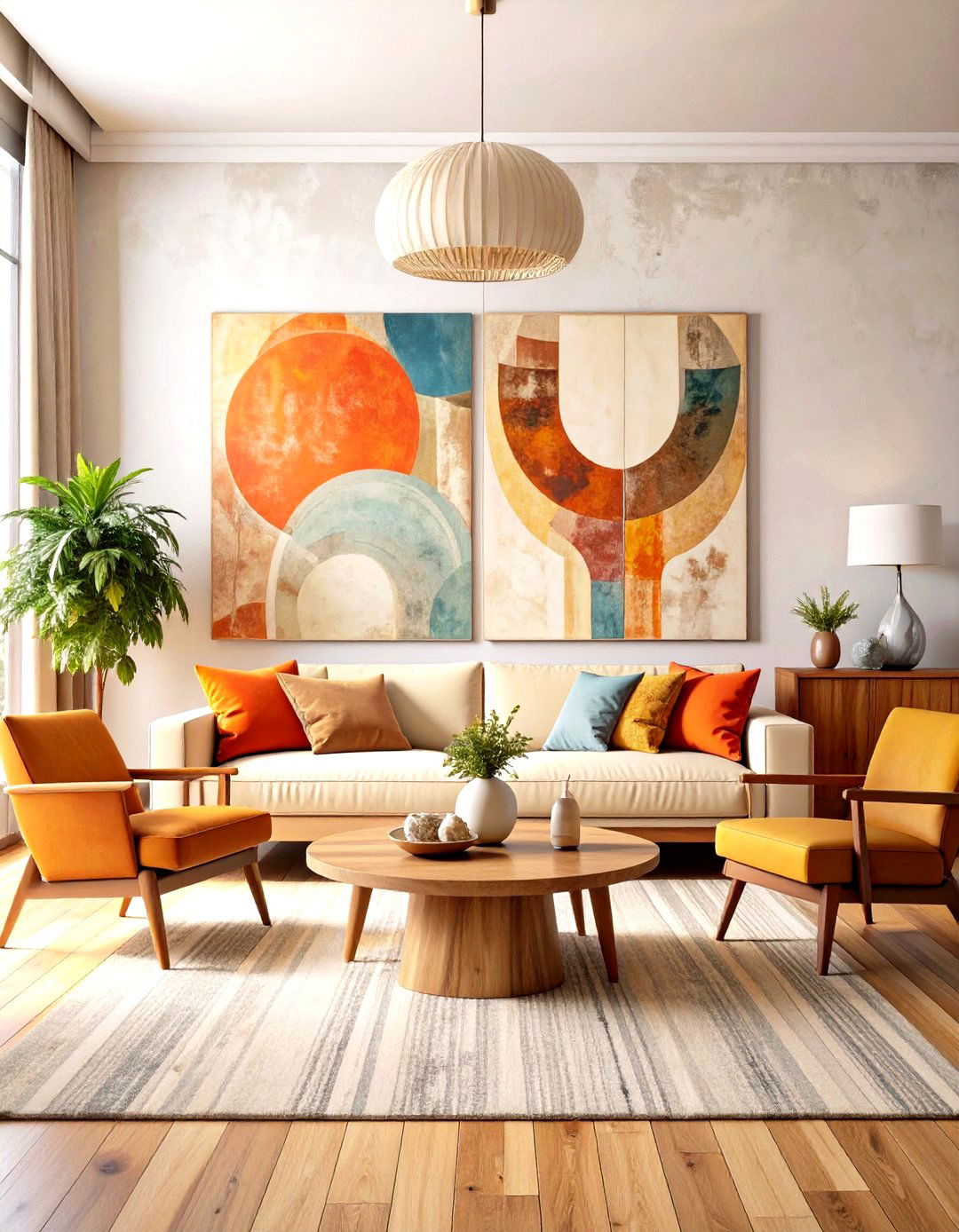
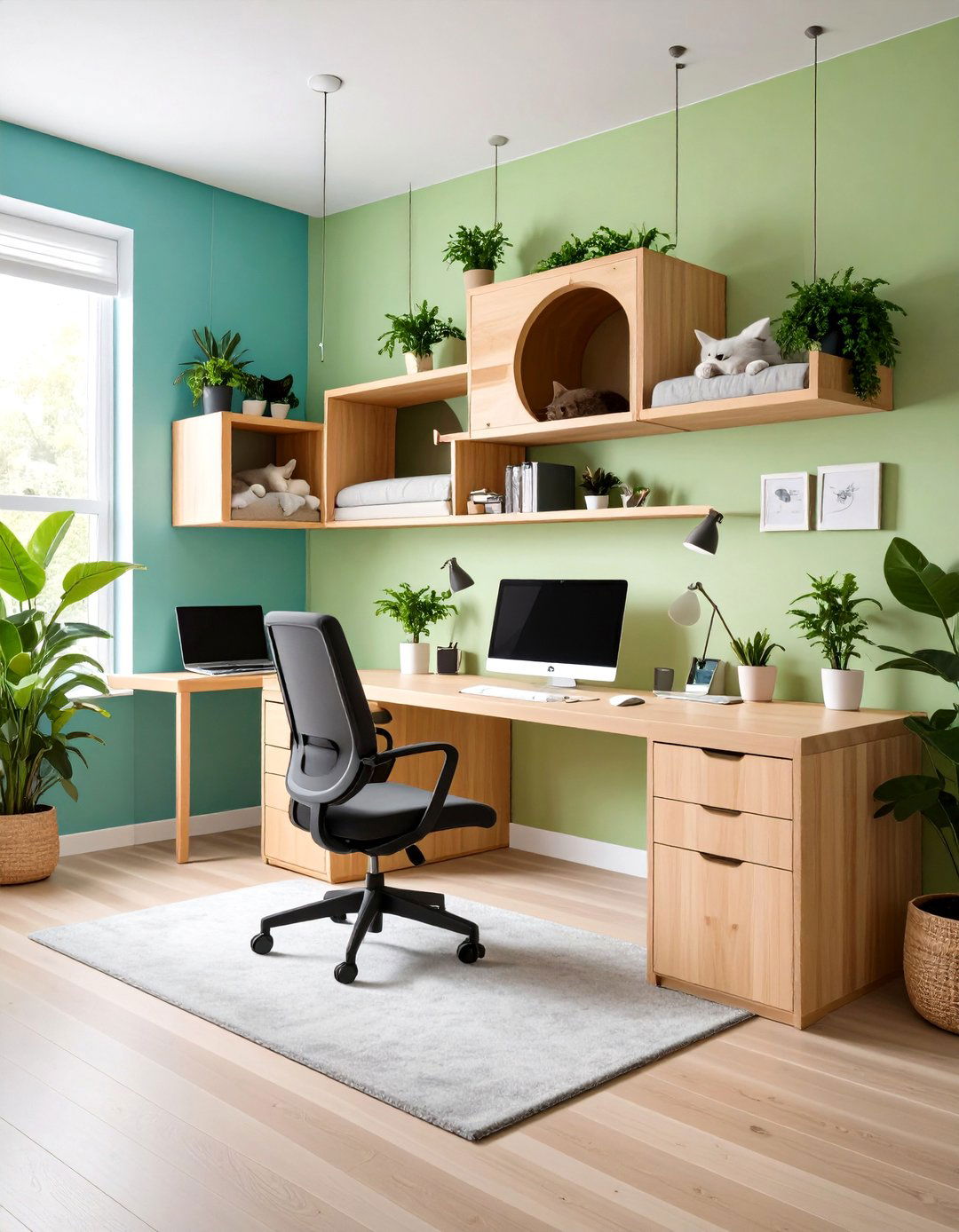
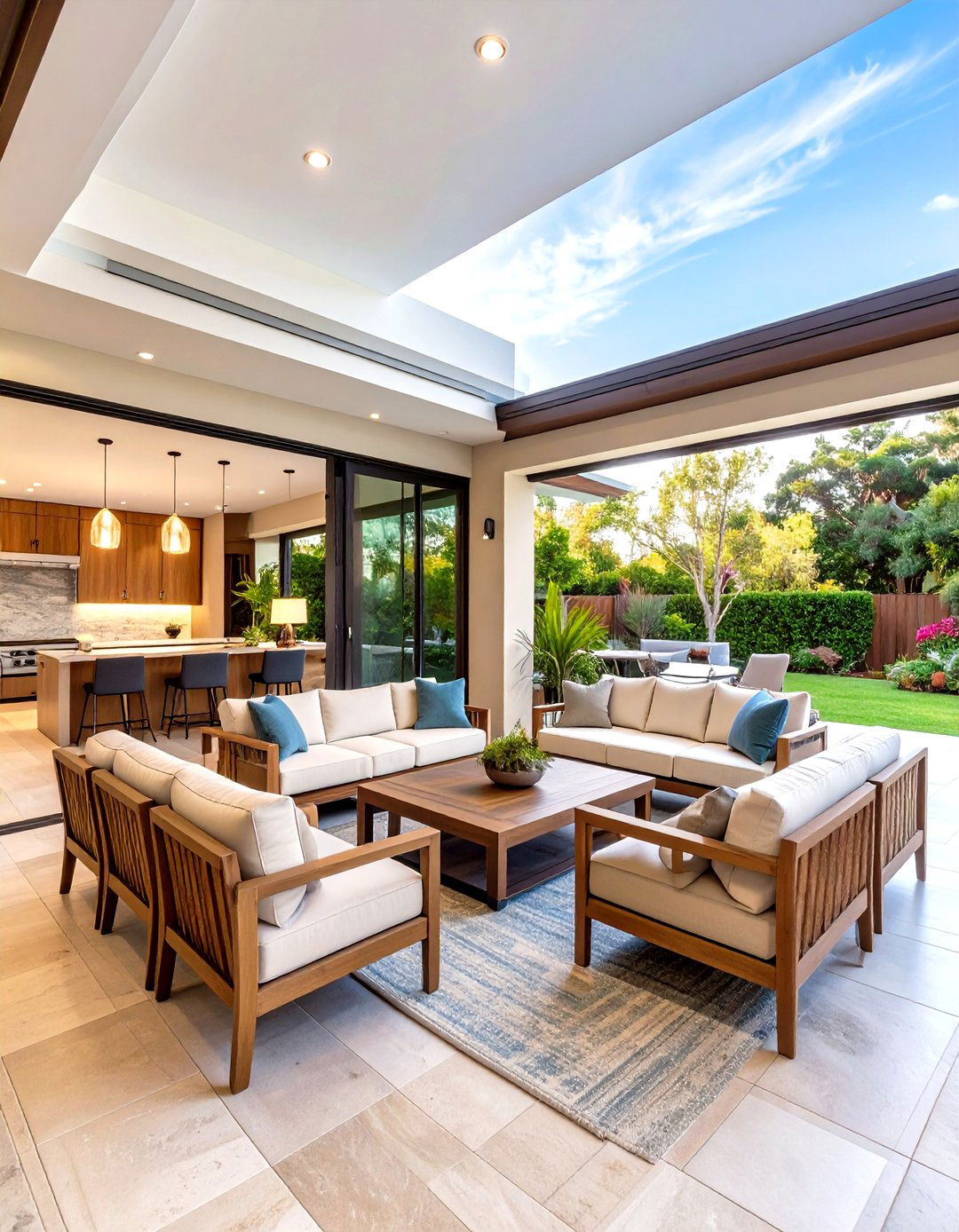
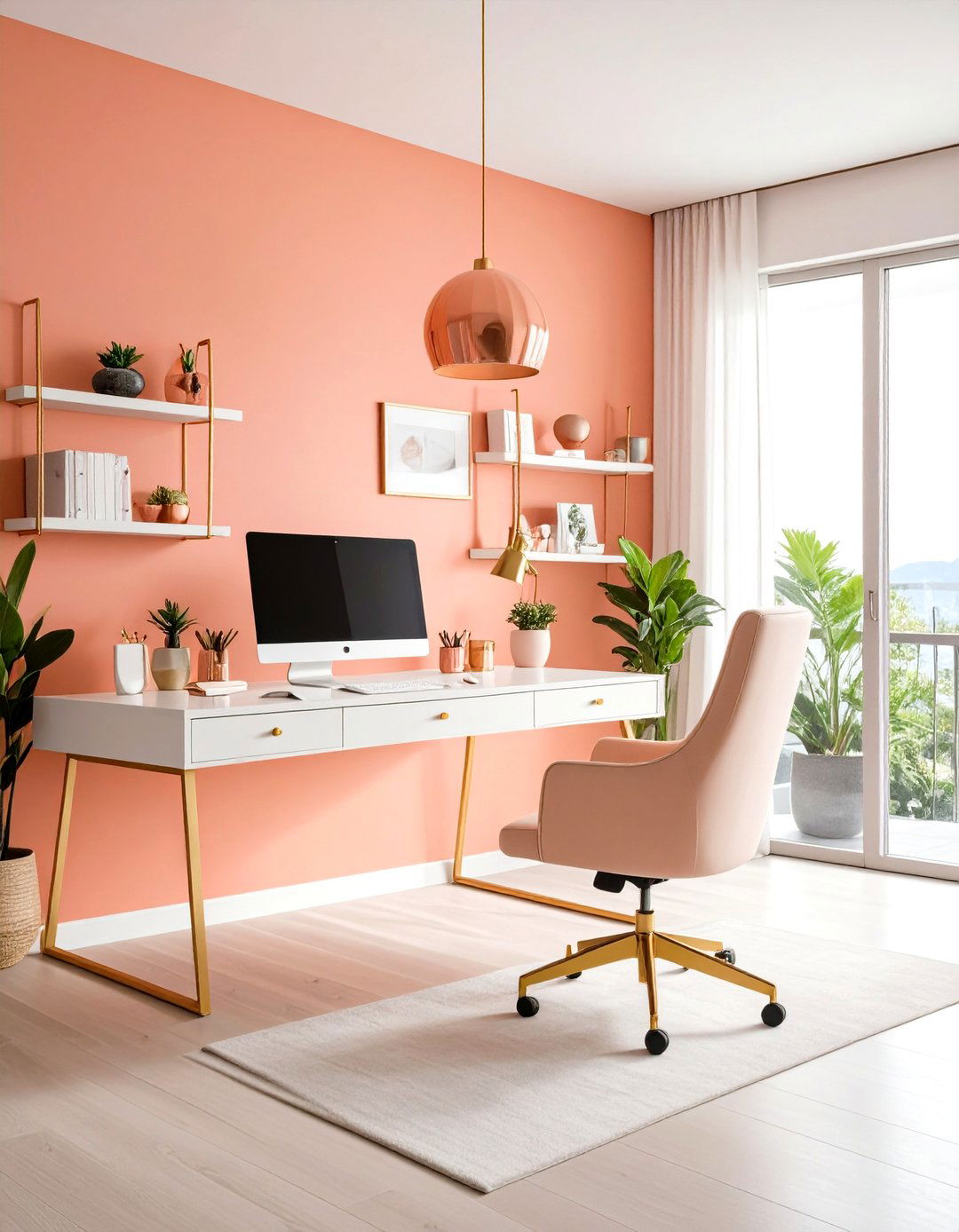

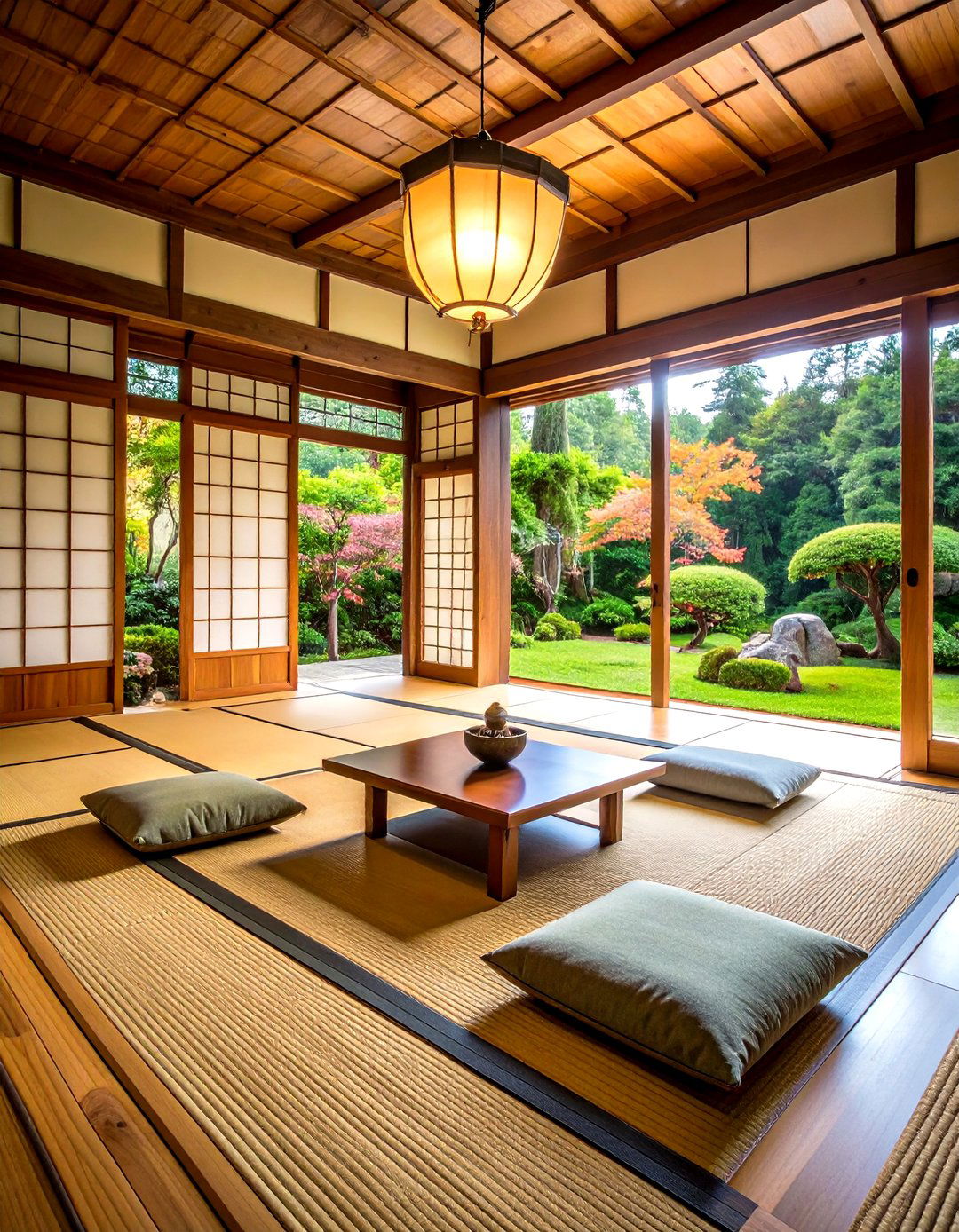
Leave a Reply